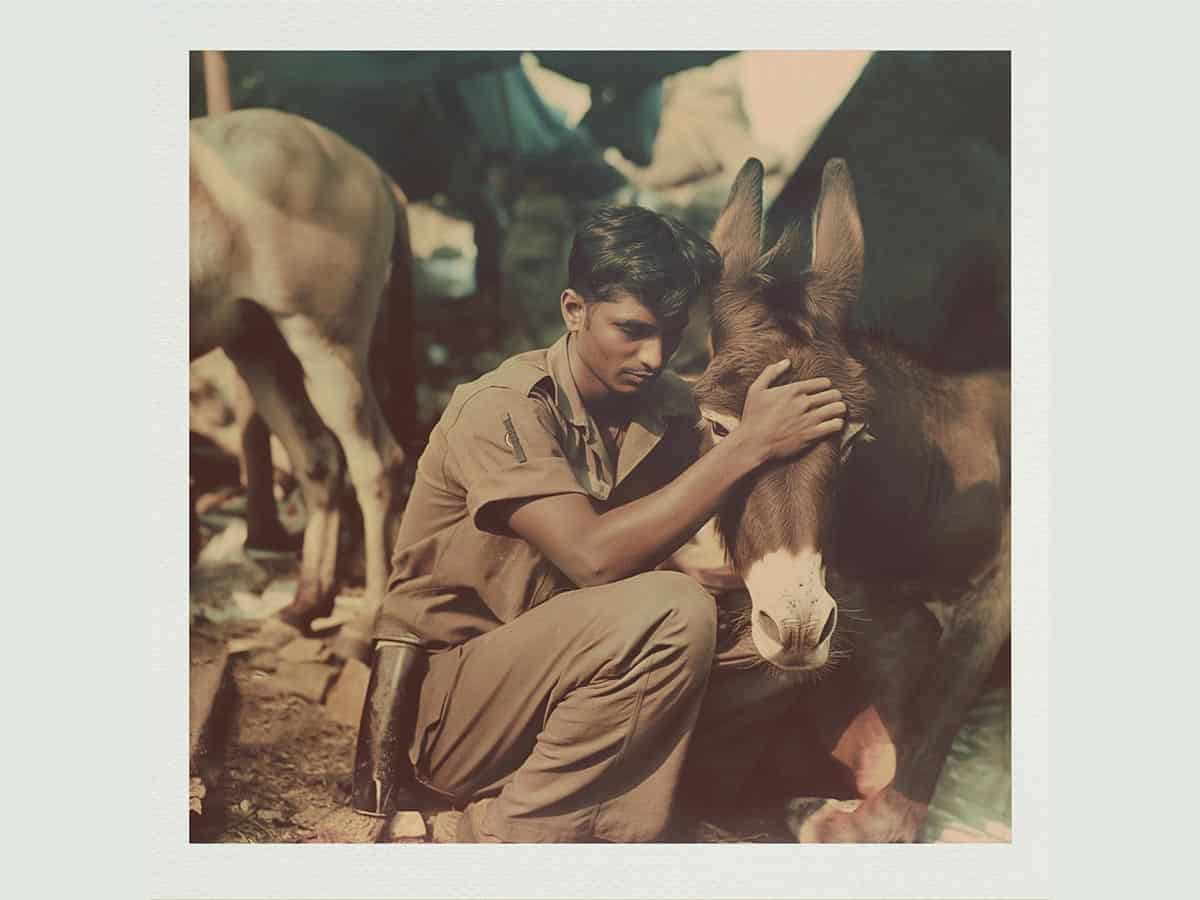
By Rabia Jaffer
As we commemorate the 25th anniversary of the Kargil War with Pakistan on July 26, it’s a valid moment to reflect on the unsung heroes who played a pivotal role in the harrowing conflict. While the bravery and sacrifice of the soldiers are well documented, another group of stalwart heroes quietly contributed to the Indian Army’s success – mules.
After working on the acclaimed film ‘Maidaan’ (on the Hyderabad football coach Syed Abdul Rahim), my latest project involves research for a novel titled “The Mule at War,” by National Award-winning film director Sankalp Reddy. This unique book delves into the Kargil War of 1999, a conflict fought in one of the most inhospitable terrains on earth.
The high altitude battlefields, with their steep inclines and treacherous paths, presented significant logistical challenges. In these harsh conditions, mules proved indispensable. As hybrid offspring of a male donkey and a female horse, mules are uniquely suited to rugged terrains. Their sure-footedness, strength, and endurance made them ideal for transporting supplies, ammunition, and even wounded soldiers across the challenging landscape of Kargil.
“The Mule at War,” a tale of courage and unexpected heroes set against the backdrop of the 1999 India-Pakistan Kargil War. This novel explores the gritty realities of war through the bond between Shamanth, a young soldier, and Mauji, a mule unlike any other. As the debate rages between traditional ways and modern warfare, Shamanth’s world is turned upside down by an attack that leaves the army stranded.
With no roads and no hope, the army turns to their last resort: the mules. Among them, Mauji shines as a beacon of resilience, teaching Shamanth and his fellow soldiers the true value of loyalty and bravery. Embark on a gripping adventure where the unsung heroes are not just the soldiers on the battlefield but also the mules who stood by them.
The bond between soldiers and their mules was one of mutual dependence and respect. Soldiers relied on these animals to carry heavy loads up steep, narrow paths that were inaccessible by vehicles. In return, the soldiers took great care to ensure the well-being of their mules, understanding that their survival often depended on these sturdy animals.
This relationship was not merely functional but deeply emotional. Soldiers often spoke to their mules, finding solace and companionship in the midst of war. The mules, in turn, responded to the care and attention, forming a silent but profound bond with their human counterparts.
Mules: The loaded mystery
Mules carried artillery, food, medical supplies and other essential items to forward posts. They navigated the perilous mountain paths with remarkable agility, often under heavy fire. Their contribution was crucial in maintaining supply lines, which were vital for the Indian Army’s operational success.
One notable account is that of Mule Number 269, affectionately named “Veer” by the soldiers. Veer carried over 300 kilograms of ammunition to a forward post under intense enemy fire, ensuring that the soldiers had the necessary supplies to hold their position. Stories like these highlight the bravery and resilience of these remarkable mules.
Why we need to remember the mules
Despite their significant contribution, mules remain largely unrecognized in popular narratives of the Kargil War. Educating people about these animals and their role in military history is essential. Mules are a unique species, combining the strength and endurance of donkeys with the speed and agility of horses.
The role of mules extends beyond the battlefield, as they continue to be used in various civilian and military
applications worldwide. As we remember the heroes of Kargil, let us also pay tribute to the mules who stood by the soldiers. Their unwavering dedication and resilience exemplify the extraordinary human-animal bond that often goes unnoticed.
The story of the mules in the Kargil War is a testament to the diverse and often surprising contributors to India’s military history. This anniversary, let us honor all the heroes of Kargil – both human and animal.
Their courage and sacrifice has made our nation’s history, reminding us of the profound connections that transcend species in times of adversity.
(Rabia Jaffer is a researcher who specialises in exploring historical events and uncovering compelling human stories of endurance and motivation. Her work involves doing in-depth research for the feature film ‘Maidaan’, the aforementioned novel an ongoing documentary series.)



